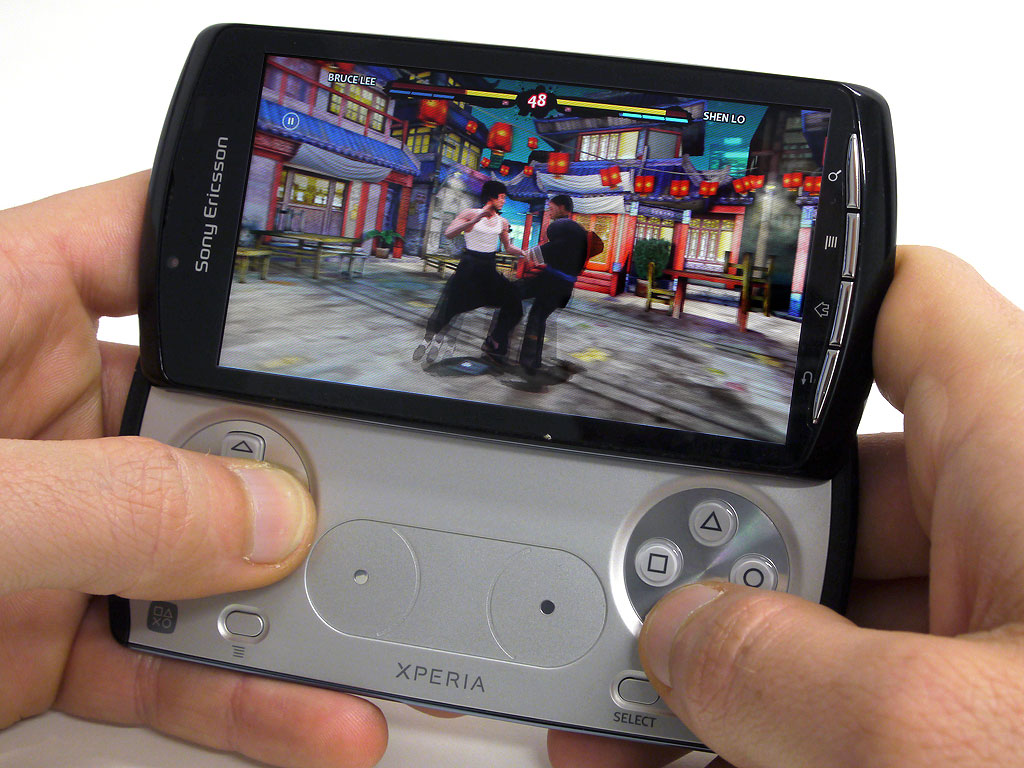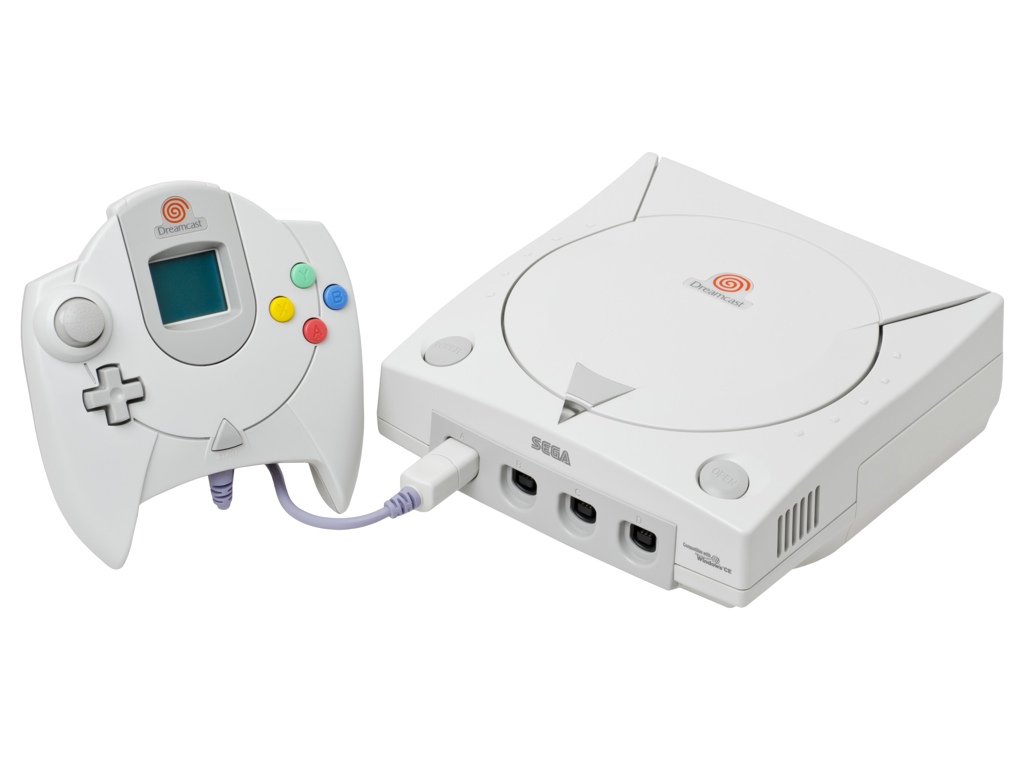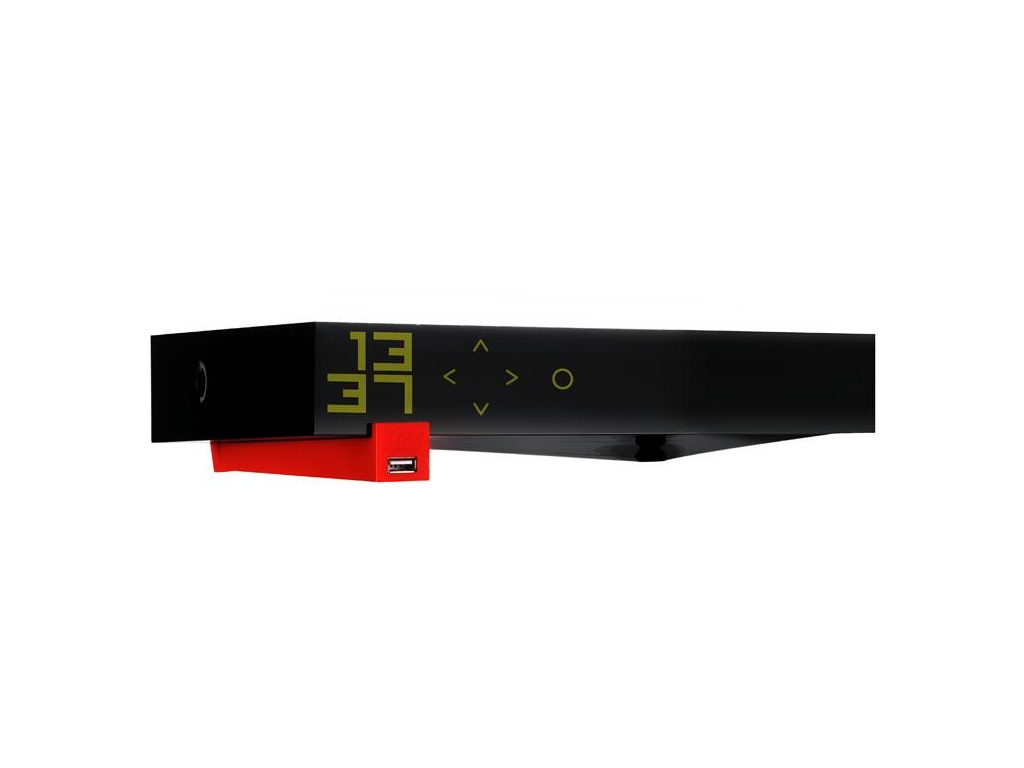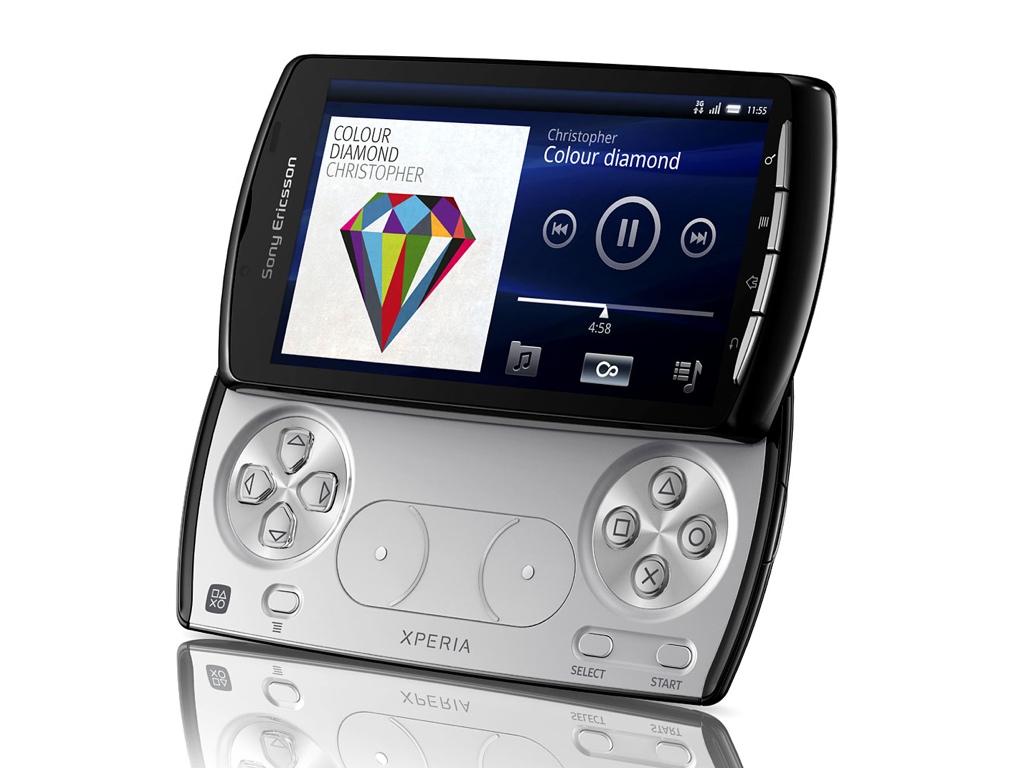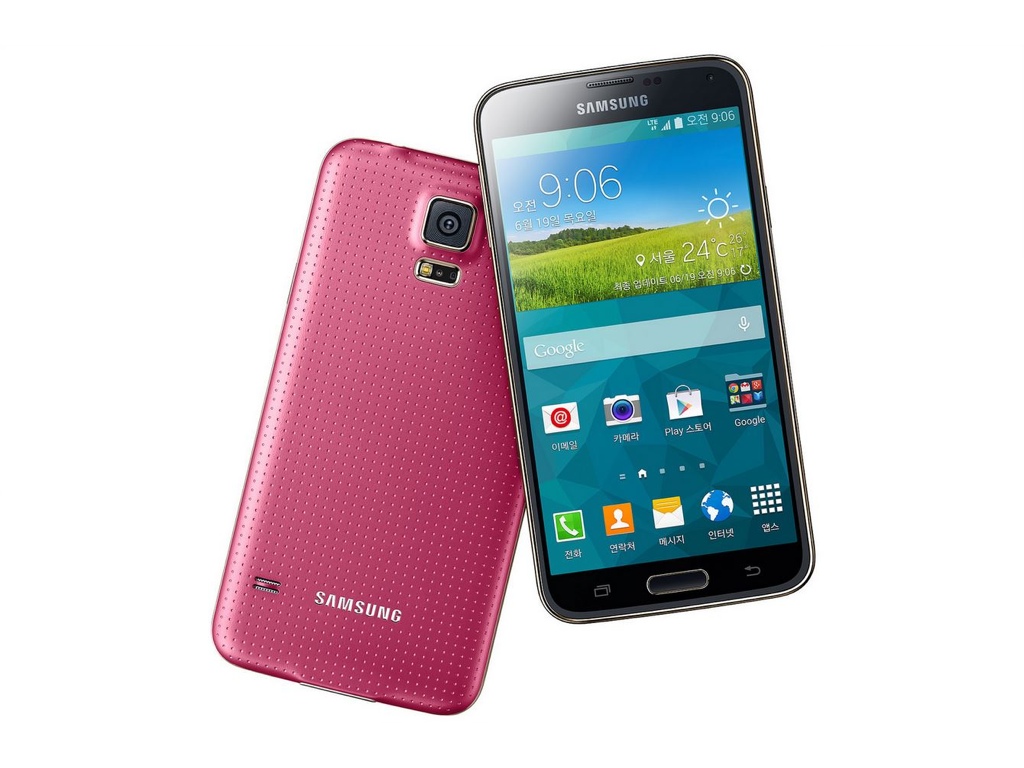The Evolution Of Mobile GPUs In Pictures
Mobile GPUs
In recent years hardware for smartphones and other mobile devices has been one of the fastest-growing areas of the technology market. The huge number of smartphone sales has attracted companies from all over the industry to try to produce new hardware and software for these devices. Although ARM's RISC processors have been the primary CPUs used inside these devices, along with Google's Android and Apple's iOS software, there are still several companies competing for the mobile GPU market leadership. AMD, ARM, Nvidia, PowerVR, Qualcomm and Vivente are the most prominent of these companies, and we will look at each of them to gain some insight into this highly competitive area of the smartphone industry.
Imagination PowerVR
Imagination Technologies is among the oldest of the companies competing for mobile GPU market leadership, having been in business for more than 15 years producing GPUs for computers, game consoles (like the Sega Dreamcast) and other devices. In the early 2000s, as ATI and Nvidia experienced significant increases in their GPU performance, many companies that produced graphics chips were pushed out of the PC market. In response, Imagination focused development on low-power GPUs, and evolved into a powerful force in the mobile market.
PowerVR's graphics technology is unique in the graphics industry, as it uses the polygon as the basic geometric figure instead of the triangle. PowerVR also simplifies the rendering process by using a technique known as tile-based differed rendering, which cuts the images into small areas known as "tiles," which are then processed one at a time. This technique makes it easy to parallelize the processing and reduces the bandwidth required by the GPU.
The PowerVR MBX (2001)
The PowerVR MBX and the MBX Lite are technically identical, but the MBX Lite typically consumes less power because it usually uses a lower clock speed. This GPU has been integrated into SoCs like the first iPhone and the Nokia N95, and has also been integrated into other products such as the Dell Axim 50v. SoCs from Freescale (i.MX 3), Texas Instruments (OMAP2) and Samsung incorporate the MBX GPU. It was also used by Intel as an integrated GPU on some ARM 2700G processors. The PowerVR MBX is compatible with OpenGL ES 1.x, OpenGL 1.1 and DirectX 7, and is considered the successor to the PowerVR Kyro GPUs.
| Name | PowerVR MBX | PowerVR MBX Lite |
|---|---|---|
| Date | February 2001 | |
| Fab | 130 nm | |
| Pixel Shaders | 0 | 0 |
| Vertex Shaders | 1 | 1 |
| Texture Mapping Units | 1 | 1 |
| ROPs | 1 | 1 |
| Memory Interface | 64 bits | |
| API | DirectX 7, OpenGL ES 1.1 | |
| Fillrate (at 200 MHz) | 150 MPixels/s | 100 MPixels/s |
Imagination 5th Generation GPUs (2005 - 2010)
In 2005, Imagination introduced its fifth generation of GPUs: The PowerVR SGX series. These graphics processors, which featured support for OpenGL ES 2.0, and were relatively powerful and efficient graphics processors for their time, are still commonly used in smartphones today. The graphics processor is centered on what Imagination calls its Universal Scalable Shader Engine (USSE), which is designed to be easily scalable in order to target multiple performance levels. It has been used in several Samsung Exynos SoCs, the Apple A4 and in four Texas Instruments OMAP3 SoCs. Intel integrated the GPU into some of its chipsets (Poulsbo) for use with Atom and Pentium M CPUs. Some devices that use this GPU include the Freebox Revolution, the first iPad, the original iPhone, some Galaxy S2 smartphones and Google Glass.
Various configurations exist, but the SGX535 is the most common one. This model features two processing units coupled with two TMUs, and supports DirectX 9. The SGX530, SGX 531 and SGX540 models are commonly used as well. The most powerful (and most recent) GPU in this series was the SGX545, which was released in 2010. It possesses four EUs, two TMUs and supports DirectX 10.1 and OpenGL 3.2.
| Name | SGX520 | SGX530 | SGX531 |
|---|---|---|---|
| Date | July 2005 | October 2006 | |
| Fab | 65 nm | ||
| Clock Speed | 200 MHz | ||
| EUs | 1 | 2 | 2 |
| TMUs | 1 | 1 | 1 |
| Memory Interface | 32 - 128 bits | ||
| API | OpenGL ES 2.0 | ||
| Fillrate | 100 MPixels/s | 200 MPixels/s | |
| GFLOPs | 0.8 | 1.6 | 1.6 |
| Name | SGX535 | SGX540 | SGX545 |
|---|---|---|---|
| Date | November 2007 | January 2010 | |
| Fab | 65 nm | ||
| Clock Speed | 200 MHz | ||
| EUs | 2 | 4 | 4 |
| TMUs | 2 | 2 | 2 |
| Memory Interface | 32 - 128 bits | ||
| API | OpenGL ES 2.0, OpenGL 2.1, DirectX 9.0c | OpenGL ES 2.0, OpenGL 2.1 | OpenGL ES 2.0, OpenGL 3.2, DirectX 10.1 |
| Fillrate | 400 MPixels/s | ||
| GFLOPs | 1,6 | 3,2 | 3,2 |
The 5 XT Series (2009 - 2010)
In 2009, Imagination improved on its fifth-generation design with the 5 XT series. These new GPUs were capable of higher performance while at the same clock speed as the older fifth-generation graphics chips. The major changes over the previous generation were the switch to the USSE2 engine and the addition of multi-core support. Although the fifth-generation GPUs varied in the number of EUs and TMUs inside each chip, all execution resources were held inside of a single USSE core. Starting with the 5 XT series, multiple USSE2 engines could be combined to produce faster GPUs. GPUs containing more than a single USSE2 engine were indicated by the "MP#" suffix, with the number after the "MP" displaying the number of USSE2 cores. Examples of this include the Apple A5, with PowerVR SGX543MP2 (two USSE2 cores), and the PlayStation Vita, with PowerVR SGX544MP4 (four USSE2 cores). Although it is technically possible to use up to 16 cores, conventional implementations typically use only two, three or four.
Get Tom's Hardware's best news and in-depth reviews, straight to your inbox.
There are only two variations of the USSE2 in the 5XT Series — the SGX543 and SGX544's USSE2 units, which contain four EUs and two TMUs, while the SGX554 USSE2 possesses eight EUs and two TMUs. The series features compatibility with OpenGL ES 2.x and DirectX 9.0, but API support varies from one implantation to another. It was used mostly by Apple (A5, A5X, A6, A6X), Samsung (Exynos) and Texas Instruments.
| Name | SGX543 | SGX544 | SGX554 |
|---|---|---|---|
| Date | January 2009 | June 2010 | December 2010 |
| Fab | 32 nm | ||
| Clock Speed | 200 MHz | ||
| EUs Per USSE2 | 4 | 4 | 8 |
| TMUs Per USSE2 | 2 | 2 | 2 |
| USSE2 Clusters | 1 - 16 | ||
| Memory Interface | 128 - 256 bits | ||
| API | OpenGL ES 2.0, OpenGL 2.xOpenCL 1.1, DirectX 9.0 | ||
| Fillrate | 3,2 GPixels/s | ||
| GFLOPsper core | 7,2 | 7,2 | 14,4 |
PowerVR Rogue (2012 - 2014)
In 2012, Imagination released its sixth-generation GPUs, code-named Rogue. Rogue was Imagination's first unified architecture, and was also the first to support DirectX 10 (although the G6100 and 6XE range were limited to DirectX 9) and OpenGL ES 3.1. Similar to the 5 XT series, the Rogue series of GPUs supports multiple graphics core configurations. Although the sixth-generation GPUs offer significant advantages over the 5XT series, SoC manufacturers have been slow to adopt it, preferring to continue using the 5XT graphics chips, or to move to a competitor. Quad-core implementations can be found inside the Intel Atom Z34x0 CPUs (PowerVR G6400), the Apple A7 (PowerVR G6430) and the Apple A8 (PowerVR GX6450), and dual-core configurations inside of some SoCs from Allwinner (PowerVR G6200) and Mediatek. The Apple A8X uses a particularly high-performance eight-core configuration known as the PowerVR GX6850.
| Name | G6100 | G6200 | G6230 |
|---|---|---|---|
| Date | February 2013 | January 2012 | June 2012 |
| Fab | 28 nm | ||
| Clock Speed | 600 MHz | ||
| Core Count | 1 | 2 | 2 |
| TMUs per Core | 2 | 2 | 2 |
| API | OpenGL ES 3.1OpenGL 2.xOpenCL 1.2DirectX 9.0 L3 | OpenGL ES 3.1 OpenGL 3.2 OpenCL 1.2 DirectX 10.0 | |
| Fillrate | 2,4 GPixels/s 2,4 GTexels/s | ||
| GFLOPsper core(FP16,FP32) | 57,638,4 | 76,876,8 | 115,276,8 |
| Name | G6400 | G6430 | G6630 |
|---|---|---|---|
| Date | January 2012 | June 2012 | November 2012 |
| Fab | 28 nm | ||
| Clock Speed | 600 MHz | ||
| Core Count | 4 | 4 | 6 |
| TMUs par USC | 2 | 2 | 2 |
| API | OpenGL ES 3.1 OpenGL 3.2 OpenCL 1.2, DirectX 10.0 | ||
| Fillrate | 4,8 GPixels/s 4,8 GTexels/s | 7,2 GPixels/s7,2 GTexels/s | |
| GFLOPsper core(FP16,FP32) | 153,6153,6 | 230,4153,6 | 345,6230,4 |
PowerVR Series 7 (2014 - 2015)
Imagination would replace the sixth generation with the seventh generation in 2014. Two versions coexist: the PowerVR Series 7XE and the PowerVR Series 7XT. API support is limited to OpenGL ES 3.1 and OpenCL 1.2 for embedded-profile devices, but extends to OpenGL 3.3 and DirectX 10 on the high-end 7XT series. These GPUs have not been used much yet by SoC manufacturers, but the GT7600 is used in the Apple A9. The most powerful GPU, the GT7900, contains 16 clusters, and a total of 32 processing units.
| Name | GT7200 | GT7400 | GT7600 |
|---|---|---|---|
| Date | November 2014 | ||
| Clock Speed | 650 MHz | ||
| Core Count | 2 | 4 | 6 |
| TMUs per Core | 4 | 8 | 12 |
| API | OpenGL ES 3.1, OpenGL 3.3OpenCL 1.2 embedded profile DirectX 10.0 | ||
| GFLOPsper core(FP16,FP32) | 166,4083,20 | 332,80166,40 | 500250 |
| Name | GT7800 | GT7900 |
|---|---|---|
| Date | November 2014 | |
| Clock Speed | 650 MHz | 800 MHz |
| Core Count | 8 | 16 |
| TMUs per Core | 16 | 32 |
| API | OpenGL ES 3.1, OpenGL 3.3OpenCL 1.2 embedded profile DirectX 10.0 | |
| GFLOPsper core(FP16,FP32) | 666333 | 1600800 |
AMD & Qualcomm (2002 - 2008)
In 2002, ATI created its Imageon line of graphics processors targeted at low-power mobile devices. Imageon GPUs were used in the Zodiac Console and Palm OS. AMD would purchase ATI in 2006, and subsequently sold off the Imageon product line to Qualcomm in 2008. Qualcomm renamed the GPU series Adreno (an anagram of Radeon), and rebranded AMD's Imageon Z430 as the Adreno 200 and integrated it into the company's Snapdragon SoCs.
Adreno 2xx (2008 - 2013)
Qualcomm's first generation of Adreno GPUs, the 200 series, is closely related to the Adreno 200, and uses the same unified 5-way VLIW architecture with OpenGL ES 2.0 and DirectX Mobile support. The latest variants, the 225 and 230, support DirectX 9, but the performance is quite low. The Adreno 200 series is used in Qualcomm SoCs containing ARM11, Cortex A5, Scorpio and Krait cores. It was used in the Snapdragon S2, S3 and dozens of others. Numerous devices used the Adreno 200 series GPUs, including several products by Samsung, HTC, BlackBerry and others. It is integrated into the majority of Windows Phone 7 devices, and the 225 variant can be found in recent devices like the BlackBerry Z10.
| Name | Adreno 200 | Adreno 200enhanced | Adreno 203 |
|---|---|---|---|
| Fab | 65 nm | 45 nm | |
| Clock Sped | 133 MHz | 200/245 MHz | 245/294 MHz |
| ALUs | 8 | 8 | 16 |
| API | OpenGL ES 2.0, OpenVG 1.1 | ||
| Fillrate | 133 Mpixels/s | 200/245 MPixels/s | 245/294 MPixels/s |
| GFLOPS | 2,1 | 3,2/3,9 | 7,8/9,4 |
| Name | Adreno 205 | Adreno 220 | Adreno 225 |
|---|---|---|---|
| Fab | 45 nm | 28 nm | |
| Clock Speed | 245/266 MHz | 266 MHz | 200-400 MHz |
| ALUs | 16 | 32 | 32 |
| API | OpenGL ES 2.0, OpenVG 1.1 | ||
| Fillrate | 245/266 Mpixels/s | 532 MPixels/s | 800 MPixels/s |
| GFLOPS | 7,8/8,5 | 17 | 12,8 / 25,6 |
Adreno 300 (2012 - 2014)
The Adreno 300 series of GPUs extended the API support to include OpenGL ES 3.x, DirectX 9.0 (9_3) and OpenCL 1.1. Adreno 300 can be found in the Snapdragon S4, 200, 400, 600 and 800 SoCs. The series ranges from the low-performance Adreno 302 with only 6 compute units (in Snapdragon 200) to the Adreno 330 with 32 units and a relatively high frequency. The Adreno 330 is the GPU found in SoCs like the Snapdragon 800 and 801 and smartphones like the LG G3 and the Galaxy S5.
| Name | Adreno 302 | Adreno 304 | Adreno 305 |
|---|---|---|---|
| Fab | 28 nm | ||
| Clock Speed | 400 MHz | 400 MHz | 400/450 MHz |
| ALUs | 24 | 24 | 24 |
| API | OpenGL ES 3.0, OpenVG 1.1OpenCL 1.1 embedded profileDirectX 11.1 (feature level 9_3) | ||
| Fillrate | ? | ? | 800 MPixels/s |
| GFLOPS | 19,2 | 19,2 | 19,2/21,6 |
| Name | Adreno 306 | Adreno 320 | Adreno 330 |
|---|---|---|---|
| Fab | 28 nm | ||
| Clock Speed | 450 MHz | 400/450 MHz | 450-578 MHz |
| ALUs | 24 | 64-96 | 128 |
| API | OpenGL ES 3.0, OpenVG 1.1OpenCL 1.1 embedded profileDirectX 11.1 (feature level 9_3) | ||
| Fillrate | ? | 1,6-2,7 GPixels/s | 3,6-4,62 GPixels/s |
| GFLOPS | 21,6 | 57,6-97,2 | 129,8-166,5 |
Adreno 400 (2014)
The more recent Snapdragon 610, 615, 616, 617, 805, 808 and 810 SoCs use Qualcomm's Adreno 400 series of GPUs. The Adreno 400 series is faster than the 300 series, and features extended API support, including DirectX 11.2, OpenGL 3.1, OpenVG 1.1 and OpenCL 1.2 Full Profile. The Snapdragon 805 is found in some high-end devices, including the Nexus 6, the Galaxy Note 4, the Note Edge and some Samsung Galaxy S5 smartphones.
| Name | Adreno 405 | Adreno 418/420 | Adreno 430 |
|---|---|---|---|
| Fab | 28 nm | 20 nm | |
| Clock Speed | 550 MHz | 500/600 MHz | 500-650 MHz |
| ALUs | 48 | 128 | 192 |
| API | OpenGL ES 3.1, OpenVG 1.1OpenCL 1.2 full profileDirectX 11.2 (feature level 11_1) | ||
| Fillrate | ? | 4/4,8 GPixels/s | 4,8-6,6 GPixels/s |
| GFLOPS | 59,4 | 144/172,8 | 324-420 |
-
blackmagnum Today's mobile gpu render pictures so fast that the screen can't keep up and you see screen tearing. It's time for smartphone version of G-sync or Free-sync, or just force V-sync like old times.Reply -
owned66 ReplyToday's mobile gpu render pictures so fast that the screen can't keep up and you see screen tearing. It's time for smartphone version of G-sync or Free-sync, or just force V-sync like old times.
all android phones now a triple buffered and stuck at 60 Hz - stutter yes but NEVER tear -
owned66 ReplyToday's mobile gpu render pictures so fast that the screen can't keep up and you see screen tearing. It's time for smartphone version of G-sync or Free-sync, or just force V-sync like old times.
all android phones now a triple buffered and stuck at 60 Hz - stutter yes but NEVER tear
60 FPS*
-
MetzMan007 ATI / AMD probably kicking them selves now for selling off the Imageon line. Nvidia just needs 1 good device for there stuff and they will take off.Reply -
IInuyasha74 Reply17113807 said:ATI / AMD probably kicking them selves now for selling off the Imageon line. Nvidia just needs 1 good device for there stuff and they will take off.
I'd say you are right. Not that AMD couldn't redesign a similar low-power GPU like the original Imageon series of products, but they could have continued upgrading it and probably had a more profitable licensing business similar to what ARM has now. -
razor512 V-sync can be disabled on android at least, though I do not recommend it. A heavy GPU load can increase temperatures and drain the battery fast. On higher end SOC it leads to extra throttling. You can test this using a program like 3c toolbox to monitor the clock speeds after a heavy load with v-sync on and off.Reply
Even SOCs that don't normally throttle, will throttle with a 100% GPU and CPU load. (I have never seen an android game be graphically intensive and also do a 100% CPU load). -
g00ey Something that gave nVidia a performance advantage was according to this article when they gave up their Tegra line and started using their Keplar and Maxwall hardware in their phones.Reply
So AMD could do something similar with their Radeon hardware if they wanted to and probably be as successful as nVidia. Now AMDs present GPU hardware is getting old so I guess they are focusing on the next generation hardware. Guess it would be better to first take care of that before considering pushing GPU hardware to mobile devices. -
DbD2 ReplySomething that gave nVidia a performance advantage was according to this article when they gave up their Tegra line and started using their Keplar and Maxwall hardware in their phones.
So AMD could do something similar with their Radeon hardware if they wanted to and probably be as successful as nVidia. Now AMDs present GPU hardware is getting old so I guess they are focusing on the next generation hardware. Guess it would be better to first take care of that before considering pushing GPU hardware to mobile devices.
More that nvidia made their Kepler and Maxwell architectures from the ground up to be mobile friendly, something AMD haven't done. In a moment of stupidity AMD sold their whole mobile line to qualcomm for peanuts, and decided to concentrate on high powered desktop gpu's.
The unbelievable thing is AMD were ahead of nvidia years back - they had a mobile gpu line before nvidia and even their desktop gpu's were more efficient then nvidia (who at the time were more interested in gpu compute and super computers). Nvidia then recognised the importance of low power and mobile and made that a number 1 priority. In that same time period AMD sold their mobile gpu's and went high power with their gpu's becoming less efficient then nvidia's. Now nvidia have not only the mobile market but pretty well the entire discrete gpu laptop market too, while AMD are going bust.
Bottom line is AMD's management suck!
